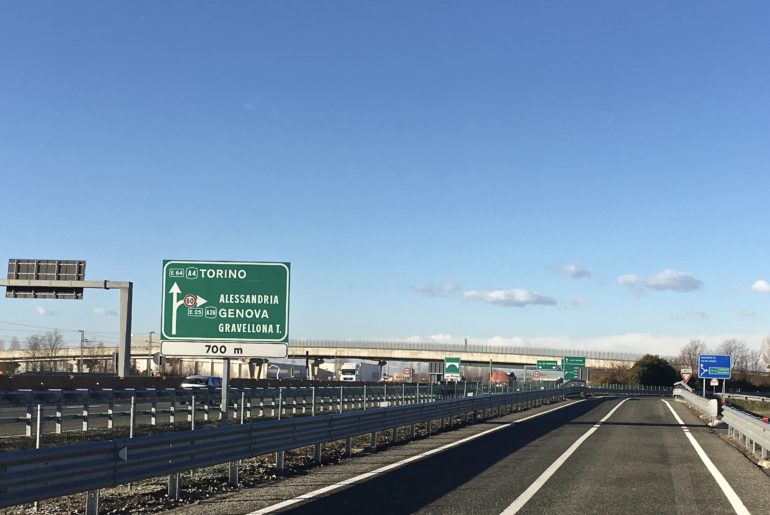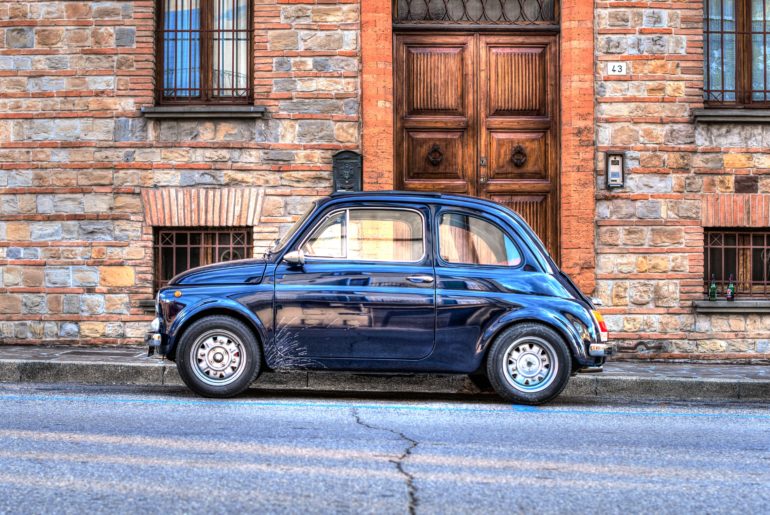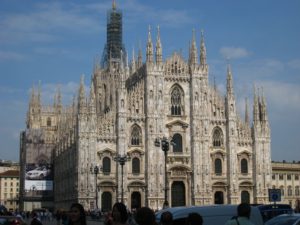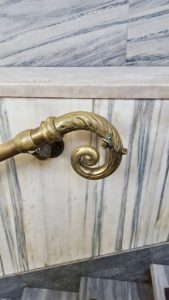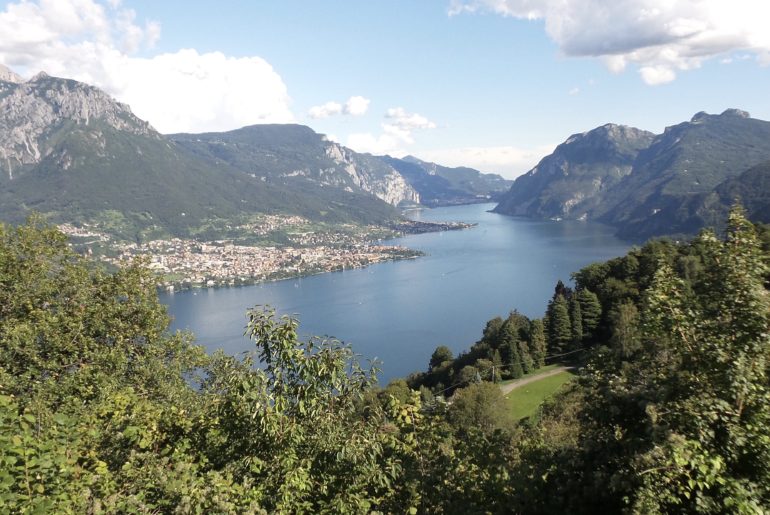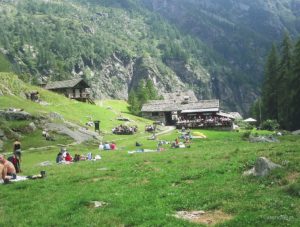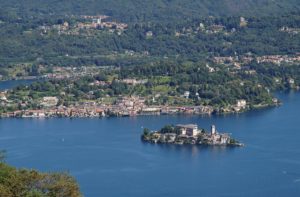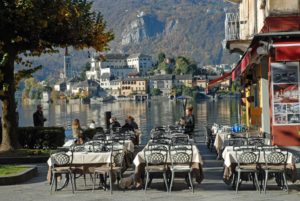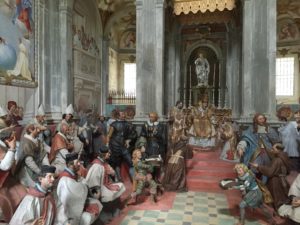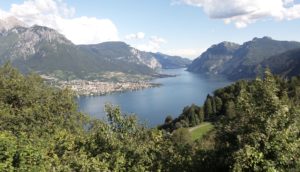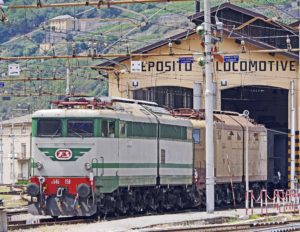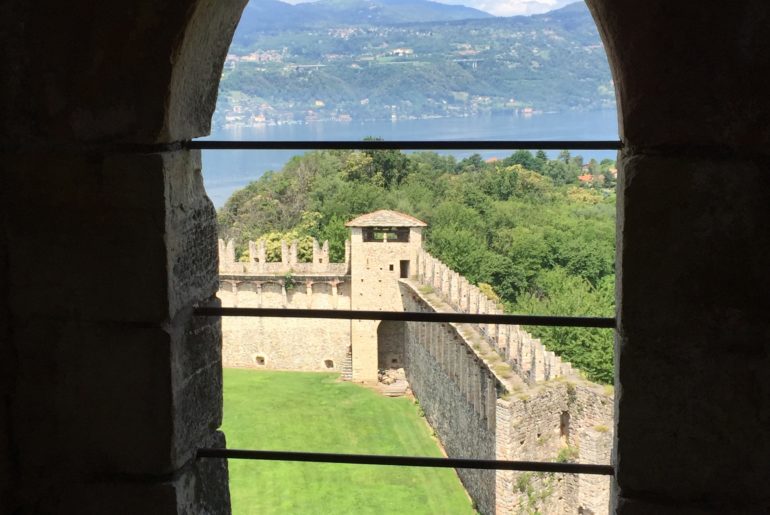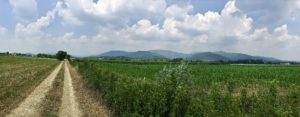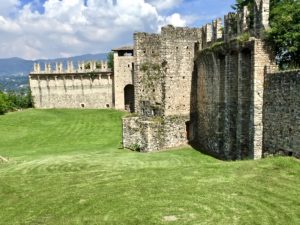‘I hear you are going to Italy this summer…. will you be driving there?”
“No way! They are crazy drivers over there.”
Not Really Crazy Drivers
It’s certainly fair to say that Italians don’t drive defensively, but to say they are crazy drivers is certainly overkill.
Not all Italian drivers are aspiring Formula One drivers and you will find all sorts just like anywhere else in the world. I think what makes tourists a bit squeamish about driving there, is that it isn’t so much the drivers on the road, but the roads themselves and the country’s landscape. Italy can put a road where only Italians can see it fit.
Driving in the country, you’ll notice beautiful landscapes, but paying attention to the roads is a must, as often they serpentine through fields of poppies or lavender while climbing to small towns that don’t even seem to have roads- just very narrow mulattiere (old mule trails that are now paved).
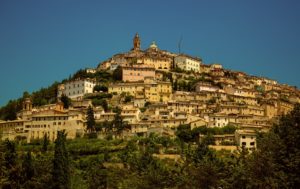
Towns that from a distance look as if they sit on top of a rock somehow have narrow streets that fit and run through them. Of course you also share narrow roads with a bicycle, a Vespa or motorcycle, which tend to pass cars at any moment they feel like it- solid lines or not. Then, you arrive in a larger center of a town, only to find out that traffic is often limited or prohibited all together, especially in the centro storico (the historic part of the city or town). At least here you can walk and not worry about getting run over… But still look out for those Vespas!
Driving in Italy actually is very much like anywhere else in North America or Europe. They drive on the same side as the US and Canada. The rules are pretty well the same and although speed limits are in kilometres instead of miles, generally Italian drivers tend to respect the law as well. But really, the beauty of driving in Italy is the civilized way that they constructed their autostrade (freeways). Hands down, no other freeways are like the Italian ones. Even the autobahn fails in comparison. Yes, you have to pay for them, but here you get to enjoy reaching your destinations in no time.
The Autostrada…Italy’s Toll Highway
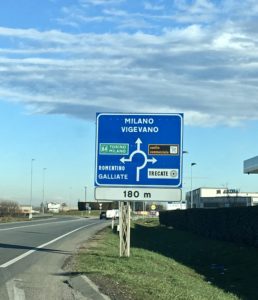
Firstly, all autostrade signs are always green, where as strada statale (state or other roads) signs are in blue. The casello (or tollbooth) is the only place where you can enter the autostrada and exit. All exits are always to the right and well indicated. When you enter the autostrada you take a ticket- it’s not likely you can enter without taking one anyways, as the arm will not lift and let you continue- but what’s important is that once you do take the ticket, you don’t lose it. You will be fined heavily. Just look for a sign that says biglietto (ticket) and the drawing of a driver reaching for a ticket.
Push on the big red button and a ticket shoots out. Once you enter the freeway, it’s like entering a race track. However, the similarities end there. There is a speed limit of 130 km/hr. It’s less in the tunnels (110 km/hr) and less yet if there is construction. Drive at your own pace as long as you follow the rules of the land. Another great thing about the autostrada is the constant signage telling you how far the next stazione di servizio (gas station) is, as well as signposts pointing out point of interest such as an XI century castle or a XV century monastery, for instance. When the exit sign is posted, you usually have another sign that points out all the other destinations when taking that particular exit. That’s very handy, because often the place that you are going may be on that sign although the exit itself may not be called that..
Everything you Need in the Autostrada
What’s great is that gas stations are just like a pits stop on a race track. Put your signal on, slowdown, stop at the pump, the attendees runs out fills the tank, you pay and you merge into traffic. It’s impossible to go in the wrong direction, unlike here in Canada and the states where you don’t have to leave the freeway and head out searching for a gas station. Incidentally, if you are using diesel, in Italy it’s called gasolio and gas is benzina or senza piombo. The gasolio handle is yellow but sometimes blue. Benzina is always green. But wait… although the pit stop can be quick, the best part of the autostrada is the pit stop itself. In particular, the Autogrill. Some are so large that they sprawl over all six lanes of traffic.
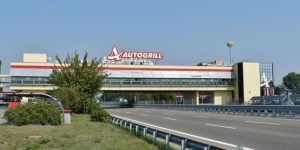
Autogrill Driving Experience
Here you will find the opportunity to refill your stomach with great local foods, panini, pastries cappuccini and of course great local gastronomic gifts. Although Autogrill is a franchise and found all over the autostrada(e), they all have a distinct local feeling. For instance, if you’re driving through Emilia Romagna you will find Prosciutto di Parma or Culatetto, as well as other typical foods the area. But if you are driving in the vicinity of Trento in the north you will find Speck or maybe Pancetta Stesa e Affumicata on their shelves. These Autogrill are sometimes so big that they straddle all six lanes of traffic, with sit down restaurants, self service buffets and/or quick service grab and go eateries. It’s unlikely that you wouldn’t find something to satisfy your appetite, even if you are not hungry.
A couple of rules to follow: the parking lot is an ideal place for individuals who prey on tourists and on cars full of luggage, so pay attention to your surroundings. I’ve stopped at Autogrill probably a thousand times and nothing has ever happened, but I still check my surroundings every time and hide things visible in the car. I know it’s common sense but nonetheless worth mentioning.
How the toll System Works
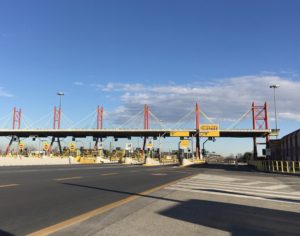
Exiting the freeway is quite simple. Look for signage above the tolls that say Viacard and/or Carte in blue (credit cards) or Telepass in yellow. Avoid the yellow painted lane directing you to the Telepass. That’s for those who have a device installed in their vehicles and are billed at home.
As a tourist, you likely have a car rental and won’t have that device. So avoid it and head for the one with Euro bills and coins on it if you are paying with cash or follow the blue painted lane with Viacard which accepts credit cards.
When you arrive at the booth, insert the ticket that was handed to you earlier, with the arrow pointing into the slot and then insert the credit card in the same slot. The machine will spit out your card so don’t panic. The bar will rise and a lovely voice will tell you “arrivederci.” If you want a receipt, press the button before inserting the card.
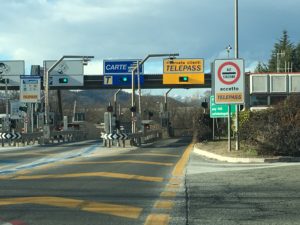
Know When to Choose and Limit the Autostrada to Save When Driving
Using the autostrada is not inexpensive. Budget 10-15 cents per kilometre travelled. The time that you will save is irreplaceable. For instance, the three hour drive from Florence to Rome on the autostrada equals to 8 hours if you decide to take the free Via Cassia or SS2 as you go into every little town and village on the way. You will hit all the lights and stop signs, roundabouts as well as dealing with traffic in general. The surroundings may be spectacular and the scenery breathtaking but… it comes down to time and what is more important. That’s usually where I come in with options and recommendations with clients. Sort of choosing your battles. Maybe dividing up the trip between autostrada and the statale (country roads) based on what you want to see, where you need to be and how much time you have at your disposal.
Also important to know, on the autostrada the gas stations are open 24 hours and 7 days a week. But in the city or throughout the countryside, they open at 7am, usually close for lunch 12:30-3 or 3:30, and close again for the night at 7:30-8pm depending on the season and the area. Often they are closed on Sunday, so filling up on Saturday if you are planning a drive the next day is a good idea. There are automated gas stations, you just have to spend some time trying to figure them out.
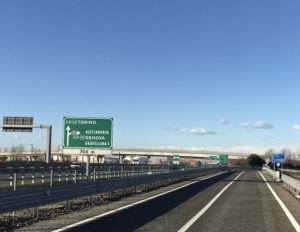
Excellent Signs and well Marked Directions
Although traffic signs are pretty well the same as rest of Europe and North America, one thing for sure is that you can not turn right on a red light. Since they drive on the right hand side of the road, it eliminates the worry of figuring out the traffic flow and direction.
Another interesting thing is that on the autostrada police will often have the Tutor Speed Control System set up to catch speeders, but they need to “advertise” that they are there. Often you’ll see electronic signs warning that “controllo di velocità” is active.( There will be a separate post on avoiding speed traps)
Polizia cars on duty always drive with their emergency lights on, so you can see them from a distance. It’s unlikely that they will pull you over. Usually they just pull up, enter your license plate in their system and move on. Tutor is the way they catch speeders. Also, as I mentioned earlier, tunnels have 110km/hr limits so those nice cameras often are set up just outside the mouth of the tunnel. Ideally you hit the brake just as you exit and you are good. Police will use the Tutor in the autostrade, and the autovelox system on all other roads. Just remember the speed limits and you are ok.
Stay in Your Lane and You’ll be Fine
Unlike North America, the lanes on the autostrada have minimum designated speeds. For instance, on a three lane the right lane is for busses, semis or any slow moving vehicle (maybe a motor home too). They can move to the center lane only to pass a slower car, but must return to the right lane right away. The middle lane is for anyone that is traveling at the speed of at least 90 km/hr up to 130 km/hr and the left lane is left for those that need to pass the middle commuters. DO NOT use a lane to the right to pass under any circumstance. The fines are high if not a complete license takeaway.
Headlights must always be on in the freeway and if it is raining heavy you should use the rear fog light. So as you read this, driving in Italy is not crazy at all. It’s simply a matter of getting used to their ways which are not so different from ours. For myself, I always rent cars when I arrive at airports,- make sure you have a international driver’s licence. You can easily purchase onet at any AAA or CAA agencies.
If you want to save money you can plan to rent cars only for the days that you must drive. Use the trains where it is most convenient. When I work with a client and we plan the trip, I always look at opportunities in minimizing the use of the car. Not so much because they are “crazy drivers” but because it can be expensive if not used wisely. Gasoline is expensive and also parking in major cities can be very expensive and hard to find. At the hotels downtown, I’ve seen parking as high as €50 per night so it would make sense to plan your car needs so as to avoid unnecessary expenses.
Check out my video 3 Things to Know About Driving in Italy.
. “Till then…Buon Viaggio
Are you travelling to Italy and are interested in my assistance, or would like to comment on my post? Just drop a line below or contact me privately at info@italiabound.com.


